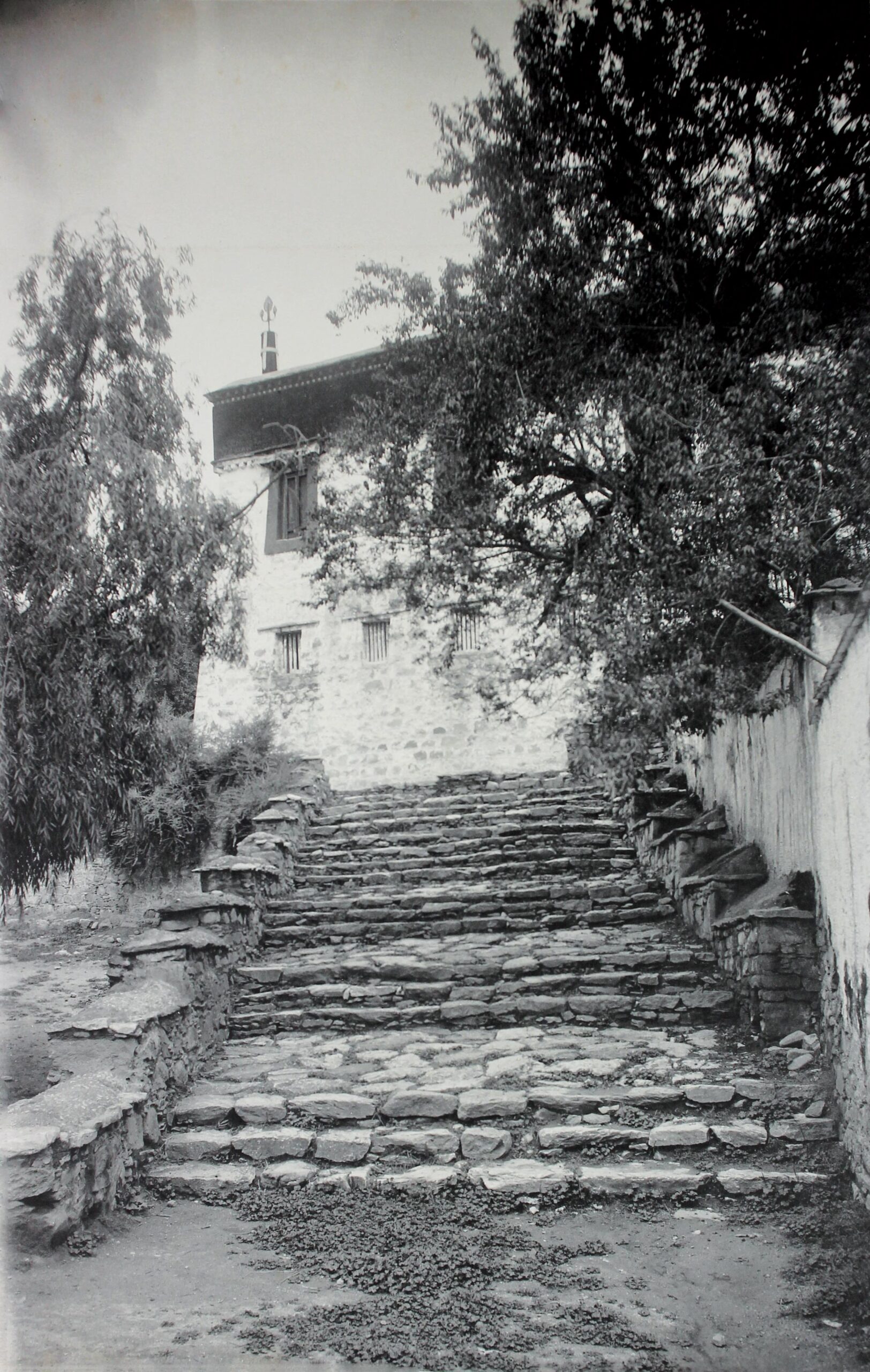Intelligence Gathering
The photographs taken by John Claude White trace the route of the British troops as they slowly moved from Sikkim to Lhasa. His subjects – bridges, mountain passes, and buildings – were chosen for a reason. He was gathering intelligence. His images of Tibet’s infrastructure gave future colonial officers a step by step guide on how to reach Lhasa from India.

The British took many photographs. Without the ferry the Tsangpo formed a natural barrier that could not be crossed without building bridges



White also recorded the easiest way to enter buildings. At Nechung Monastery in Lhasa he photographed steps and staircases, doorways and even the guard dogs that could block the route.
White’s photographs are spectacular images, but they also reveal what an army had to do if it wanted to invade Tibet. They show the bridges that were crossed, the rivers that were forged, and the mountain passes climbed. His views of valleys and mountain ranges stretching far into the distance also document the routes the mission did not take. These photographs recorded potential starting points for future imperial missions and explorations.

desperate to climb Chomolungma in order to show their power and reach to the rest of the world.
The photographs taken by John Claude White trace the route of the British troops as they slowly moved from Sikkim to Lhasa. His subjects – bridges, mountain passes, and buildings – were chosen for a reason. He was gathering intelligence. His images of Tibet’s infrastructure gave future colonial officers a step by step guide on how to reach Lhasa from India.

The British seized Chaksam Ferry and the boatmen as they marched to Lhasa. The British took many photographs. Without the ferry the Tsangpo formed a natural barrier that could not be crossed without building bridges



White also recorded the easiest way to enter buildings. At Nechung Monastery in Lhasa he photographed steps and staircases, doorways and even the guard dogs that could block the route.
White’s photographs are spectacular images, but they also reveal what an army had to do if it wanted to invade Tibet. They show the bridges that were crossed, the rivers that were forged, and the mountain passes climbed. His views of valleys and mountain ranges stretching far into the distance also document the routes the mission did not take. These photographs recorded potential starting points for future imperial missions and explorations.
